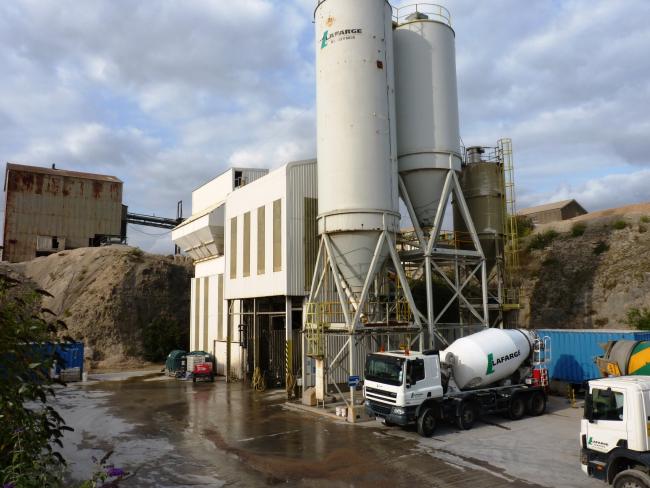31 October 2025

Lafarge Tarmac readymix concrete plant in Whitwell quarry, Derbyshire. Photo Richard Law via Geograph (CC BY-SA 2.0).
We hear a great deal from government ministers about growth: in housing, infrastructure, construction and so on. This would need a vast amount of concrete – but there’s a problem.
Britain should be self-sufficient in concrete, the most widely used material in the construction industry. We have huge natural deposits of limestone, the key feedstock ingredient for cement used as the binder in concrete, and in mortar.
Decline
But on the watch of this and previous governments, the volume of domestically produced cement has shrunk and continues to do so. Figures released by the Mineral Products Association (MPA), reported in Chemical Engineer in September, reveal the extent of the decline in production.
Output in 2024 was 7.3 million tonnes, half the level of 1990, and the lowest since 1950, when post-war rationing was still in place. Ready mix concrete sales were at an all-time low for the second quarter of 2025.
Perspective
To put volumes into perspective, a traditional four bedroom house needs between three and five tonnes of cement, while a new hospital would require almost 8,000 tonnes. A project such as the Sizewell C nuclear power plant would demand up to 750,000 tonnes.
MPA Executive Director Diana Casey said, “Cement quite literally underpins the nation’s growth and we cannot deliver new homes, schools, hospitals, transport links or clean energy infrastructure without it.”
“Cement underpins the nation’s growth.”
Soaring energy costs, the highest in the developed world, mean that domestic production struggles to compete on price with imports. Consequently the proportion of imported cement has risen from 12 per cent in 2008 to 32 per cent in 2024.
As Diana Casey puts it, “The UK has a choice: to build these vital development projects with UK made cement, or build them with imports, sending jobs, investment and economic growth overseas.”
